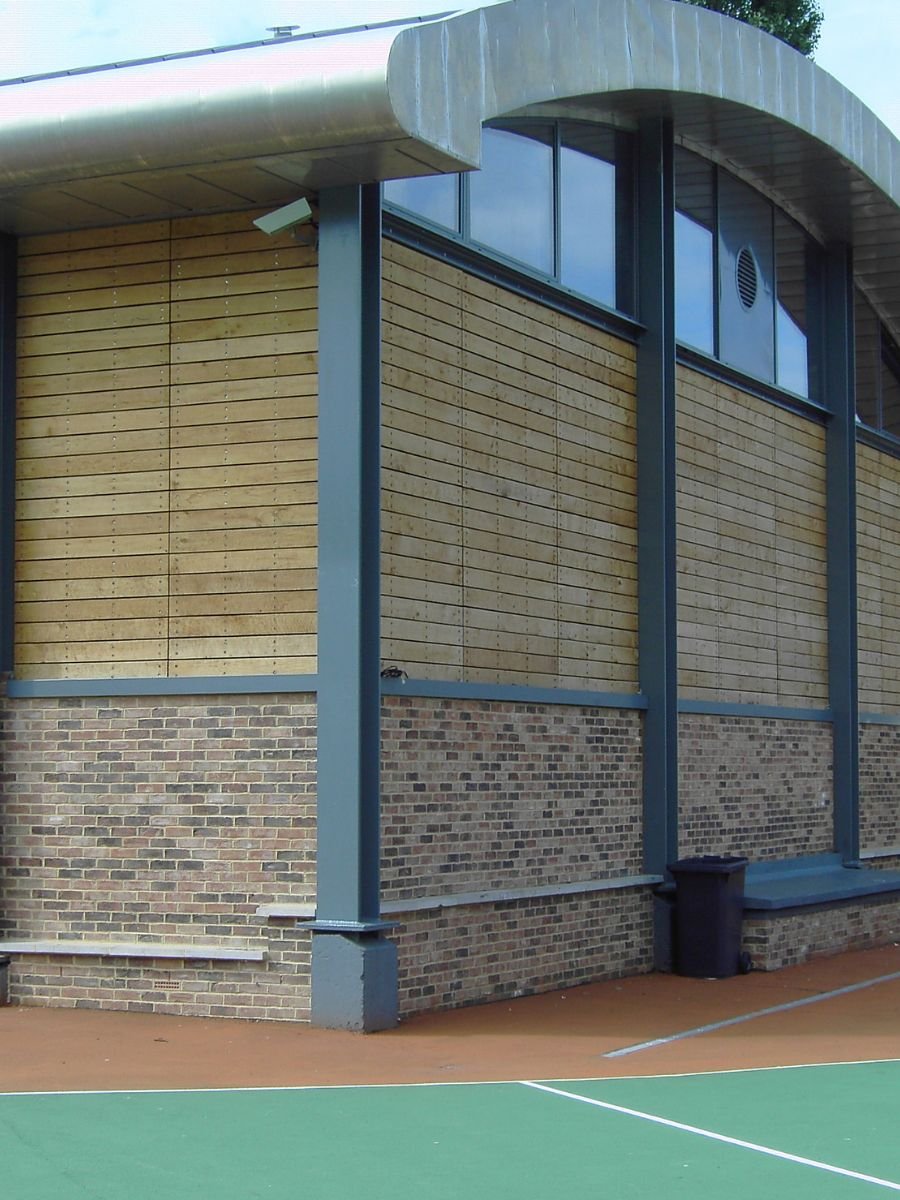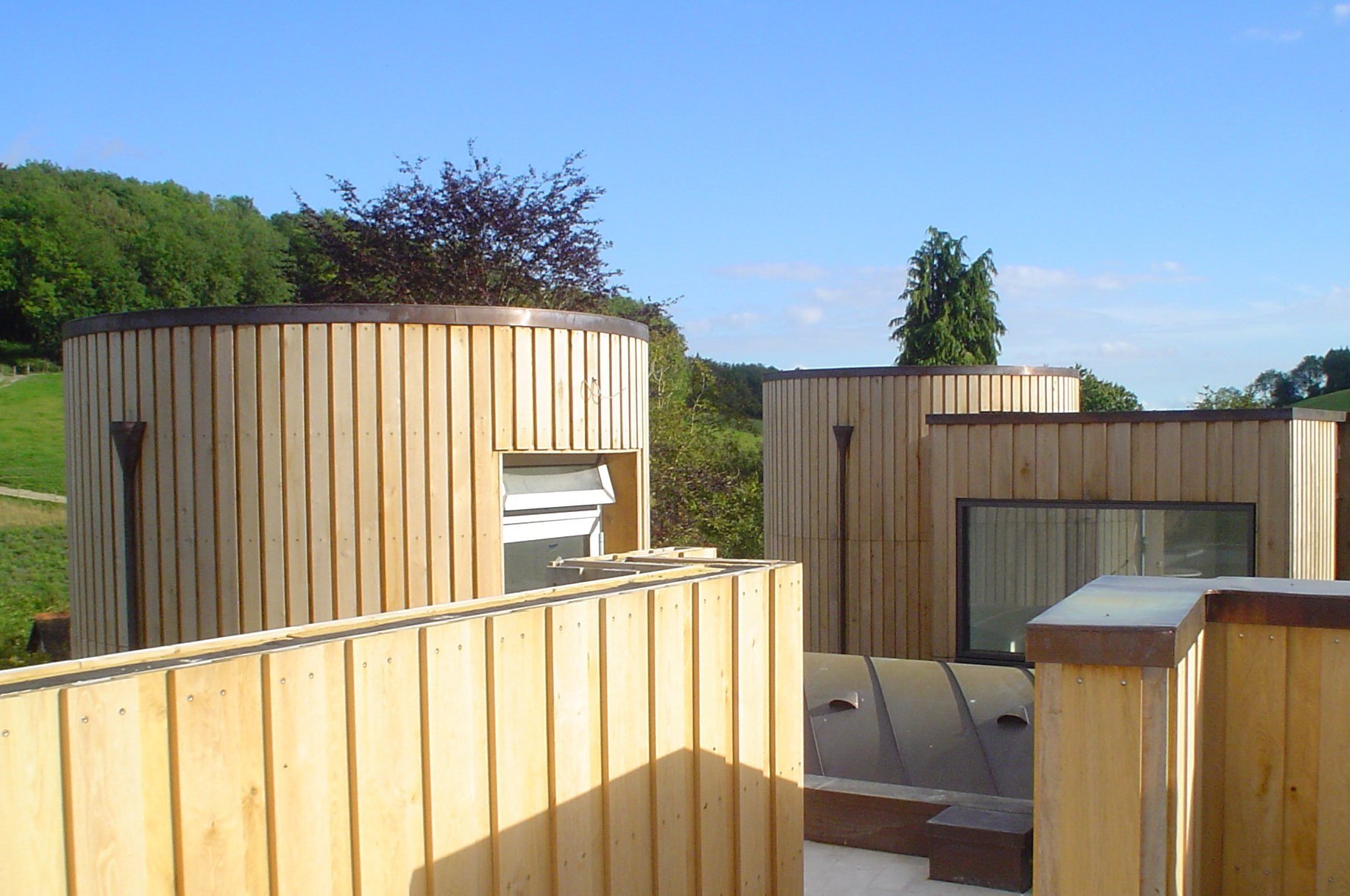Cladding
Oak Cladding
An iconic hardwood, Oak has been prized for thousands of years for its timeless beauty, strength and resistance to decay. Its honey brown colouring will weather to a soft silvery-grey when used externally and its attractive grain make it a perennially popular choice.
European Oak is a dense, heavy timber, making it a durable and long-lasting choice for external cladding. It has a natural resistance to decay and insect attack and can withstand harsh weather conditions. Maintenance is relatively low, requiring minimal cleaning and oiling.
As oak has a high tannin content, tannin may exude from the cladding boards during the first few months after installation, resulting in streaks and stains. Tannin will also react with and corrode any ferrous metal, so stainless steel fixings must be used.
Our oak is sourced from responsibly-managed woodlands in France. Although oak is generally more expensive compared to softwoods like Western Red Cedar and Douglas Fir, its durability makes it a worthwhile investment. Fresh sawn oak cladding is usually a more cost-effective choice than air dried oak, but being wet, this type of oak cladding will shrink after installation. It is therefore important to read our installation and fixings information.
Explore more information about our oak cladding below, including types of profiles available, the performance of oak cladding, installation, fixings, care and more.



Oak Cladding Profiles
WL West Timber oak cladding is available in a range of dimensions and profiles to suit a wide range of projects.
Fresh sawn (green) oak is best suited to feather-edge, waney-edge and square-edge profiles. These have a more traditional, rustic appearance and are perfect for country homes and rural outbuildings.
Air dried machined oak cladding profiles (such as shiplap or halflap) are often used vertically or horizontally to create a clean, more contemporary feel.
Additional Information
-
Sawn Profiles
• Feather-edge
• Square-edge
• Waney-edge
Machined Profiles
• Halflap
• Shiplap
• Tongue and Groove (TGV)
• Rainscreen
-
Cladding boards are 20mm thick and are usually supplied in random lengths ranging from 1.8m to 3.2m. Machined shiplap boards are supplied in 2.4m lengths.
-
150mm, 175mm and 200mm
-
60mm, 80mm, 110mm and 135mm seen faces for halflap, shiplap and tongue and groove profiles.
-
30-60 years
-
Moderately durable
-
Approximately 40-50mm less than overall depth for fresh sawn boards. When calculating the quantity of cladding you require, we recommend that you allow at least 10% extra for waste.
-
Durable – no need to treat
Fresh sawn boards will shrink as they dry out, resulting in a more rustic appearance. Air dried boards should have a much lower shrinkage.
High resistance to impact
Excellent thermal and acoustic properties
-
Time of year – Ideally during Autumn and Winter.
Pre-drilling is advised. Hand nail with stainless steel nails through the face.
-
All fixings should be stainless steel to avoid staining or corrosion. 65/75mm for sawn profiles. 50mm ring shank nails for machined profiles.
-
As oak is naturally durable it does not need to be treated after installation.
Do you require cladding for your next project?
We are a leading UK timber merchant & machinist, supplying trade, commercial & retail.
From providing cladding and flooring to specialist services such as kilning, we can help. With over 155 years experience, timber is what we do. Get in touch with our Sales Team to get your cladding quote.
